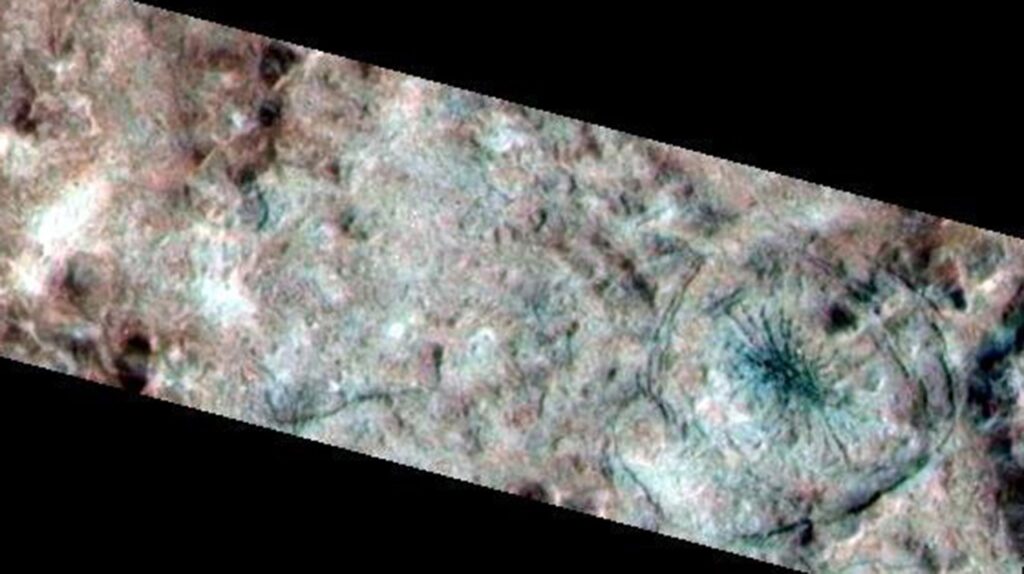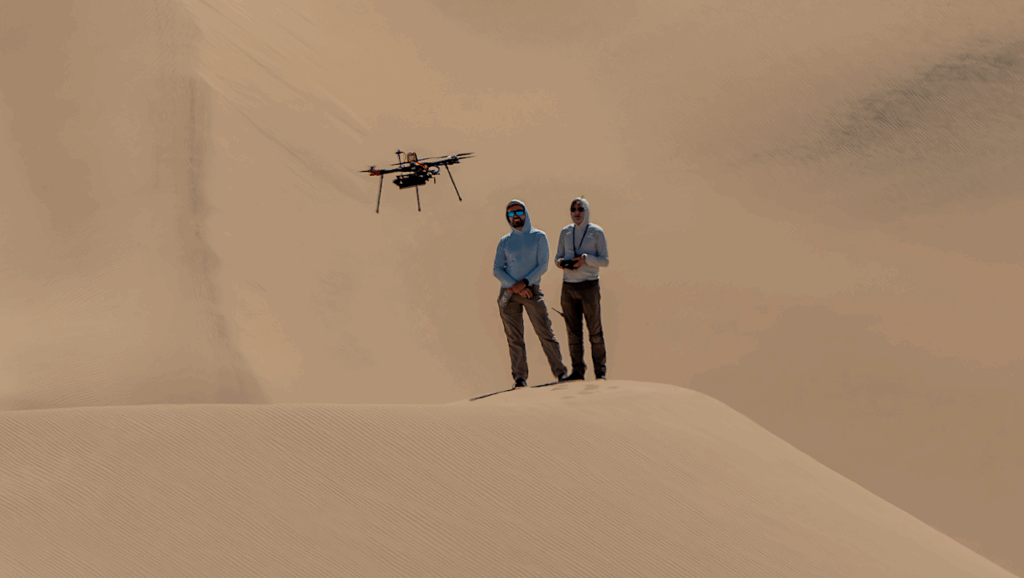Potential Signs of Ancient Life in Mars Rover Photos?

Old Dominion University faculty member Nora Noffke has made a name for herself as a geobiologist during the past decade by producing sedimentary evidence that prokaryote biofilms existed on Earth billions of years ago.
Now she is focusing efforts on showing that similar colonies of bacterial life may have existed on Mars at about the same time.
In an article published online this week by the journal Astrobiology – the article will appear later in the print publication – Noffke reports possible evidence of ancient microbial life in photos taken on the Red Planet by the NASA rover Curiosity.
The article, “Ancient Sedimentary Structures in the <3.7 Ga Gillespie Lake Member, Mars, that Compare in Macroscopic Morphology, Spatial Associations, and Temporal Succession with Terrestrial Microbialities," can be seen at http://online.liebertpub.com/toc/ast/0/0.
Together with a long-term collaborator, Robert M. Hazen at the Carnegie Institution in Washington, D.C., Noffke discovered MISS in the Dresser Formation, Pilbara, Western Australia. This discovery was published last year in Astrobiology.
The two scientists believe the structures could be the best and oldest evidence yet that microbes that got their energy from photosynthesis had colonized tidal pools on Earth during the early Achean period, which extends back 4 billion years. The study is based on a data set Noffke gathered in nearly 20 years of research on these microbial structures.
From field work done all over the world, Noffke has turned up geological samples supporting her case that the mats woven of tiny microbes we see today covering tidal flats and areas subject to episodic flooding were also present as life was beginning on Earth. The mats, which are colonies dominated by cyanobacteria, can cause unusual structures in the sand beneath them. Noffke has identified 17 main groups of such structures caused by present-day microbial mats, and has found corresponding structures in geological formations dating back through the ages.
Noffke noted last year that the structures found in Australia might also provide scientists with clues about geologic evidence of microbial life that exists, or might have existed, on Mars.
In this week’s article in Astrobiology, Noffke writes: “Sandstone beds of the <3.7 Ga (billion year old) Gillespie Lake Member on Mars have been interpreted as evidence of an ancient playa lake environment. On Earth, such environments have been sites of colonization by microbial mats from the early Archean to the present time." But the case she makes for life on Mars is more than circumstantial. Her 24-page article compares about a dozen photos taken by the Curiosity rover, which has been exploring the surface of Mars since it landed in 2012, with photos of MISS on Earth. The similarities are remarkable. NASA reported recently that the giant Gale Crater explored on Mars by Curiosity may have been able to support microbial life for millions of years in the ancient past because it was once a shallow lake. Although Mars today is much colder than Earth and seems only to have water in ice and vapor forms, scientists believe that it must have been a very different place 3.7 billion years ago – warmer, wetter and with a much thicker atmosphere. Why the climate then was more hospitable to life is puzzling, but this could have been caused by volcanoes, orbital changes or large asterorid impacts. Whatever may have caused the life-allowing conditions, Noffke reports in Astrobiology that photographs from Curiosity clearly show sediment deposits resembling those she has found in modern evaporite (salty) settings at Portsmouth Island, N.C., and Bahar Alouane, Tunisia (Africa); in playa lake sediments cropping out of the Mediterranean coast in Tunisia; and in Archean salt deposits of the Pongola Supergroup in South Africa and the Dresser Formation in Australia. Still, she acknowledges that any remote analysis of imagery has its drawbacks. “Without any evidence for life on Mars detected in returned rock samples, reconstructing microbial ecosystems on the Red Planet is pure speculation,” she writes. One section of the article therefore examines possibilities that the structures shown in the NASA photos could be also caused by “abiotic” – non-life – processes such as weathering. The article suggests a well-founded hypothesis that the structures seen on the Mars images may be ancient MISS; the preliminary evidence presented in her report may be sound enough to warrant more investigation by NASA. She calls for the Curiosity mission and other astrobiology-focused missions to Mars to dedicate specific photography and data collection assignments to the search for MISS. Noffke has received special recognition from numerous professional organizations in recent years and earlier this year was named a Fellow of the American Association for the Advancement of Science (AAAS), which is one of the highest honors a scientist can receive. She was cited by the AAAS for her “seminal contributions to the field of geobiology, particularly for elucidation of the previously unrecognized 3.5-billion year fossil record of microbially induced sedimentary structures.” In addition to her faculty position as associate professor of ocean, earth and atmospheric science at ODU, she is a research fellow at the Carnegie Institution in Washington, D.C. This month she was elected president of the Geological Society of Washington, D.C. Ancient Sedimentary Structures in the <3.7 Ga Gillespie Lake Member, Mars, That Compare in Macroscopic Morphology, Spatial Associations, and Temporal Succession with Terrestrial Microbialites








